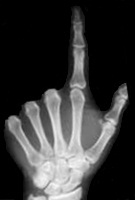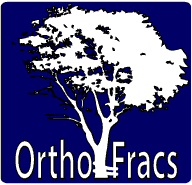Journal Club
September 2010
Total shoulder replacement compared with humeral head replacement for the treatment of primary glenohumeral osteoarthritis:
A systematic review
Author: C Radnay, K Setter, L Chambers, W Levine, L Bigliani, C Ahmad
Journal : Journal of Shoulder and Elbow Surgery 2007
Reviewed by
Dr Sam Joseph
MBBS | Accredited Orthopaedic Registrar
Introduction
- replacement surgery was introduced by Neer in the 1950’s for fractures
- It is most commonly used now for the treatment of G-H OA
- The goals are to reduce pain and improve function
- Failing non-operative treatment the options are a humeral head replacement or TSR
HHR
- decreased operative time
- decreased blood loss
- less technically demanding
- but... progression of glenoid OA & higher revision rate
TSR
- likely better pain relief, ROM and strength
- but... increased operative time
- but... increased blood loss
- but... technically more demanding
- but... potential glenoid loosening & PE wear
AIMS
- perform a systematic review of the literature comparing HHR to TSR for the treatment of primary G-H OA
- Hypothesis : TSR is superior than HHR for the treatment of G-H OA
Methodology
- Medline & PubMed searches, 1966 - April 2004, English language, Primary G-H OA and TSR and HHR
- searched bibliographies and textbooks for further studies
- study quality rated using JBJS criteria
- 1 - prospective RCT through to 5 - expert opinion
- relevant data extracted from the studies
- age, pain, ROM, complications, revision rates
Exclusion criteria
- inflammatory
- post-trauma
- R-C arthropathy
Statistical methods
- pain scores were converted to a 100-point scale
- for continuous outcomes 2-sample t test
- for discrete outcomes two-by-two X2
Results
- 23 studies
- 1952 patients
- mean 43.4 month follow up
- mean age 66
- 1 prospective RCT
- 2 poorly controlled RT
- 22 case series
Pain Relief
- 14 studies, 1185 patients
- TSR 85.8, HHR 77.6 p<0.0001
Range of Motion
- 15 studies, 1080 patients
- FE - TSR141.4° HHR 124.9° p<0.0001
- ER - TSR 42.7° HHR 42.1° p=.74
- gains in both FE&ER significantly more in TSR
Patient Satisfaction
- 12 studies, 969 shoulders
- TSR 96.7% HHR 80.4% p<0.0001
Revision Surgery
- 13 studies, 1474 studies
- TSR 6.5% HHR 10.2% p<0.025
- 8.1% of HHRs converted to TSR because of pain
Discussion
- The results of HHR appear to deteriorate with time
- The glenoid can deteriorate over time necessitating a TSR
- Conversion of HHR to TSR can leave up to 47% of patients unsatisfied
Pros of Study
- 1 prospective RCT
- able to pool data together to increase the power of analysis
- Louis U Bigliani
Cons of Study
- only 1 prospective RCT and this was with limited numbers
- only as good as the studies used
- limited follow up
Take home message
TSR for primary OA leads to improved outcomes for
- pain
- motion
- function
These improvements are better than those seen in HHR
TSR has a lower revision rate than HHR
Glenoid resurfacing must be precise
Webpage Last Modified:
13 June, 2011



